Today the SHP is posted from
Sydney DomesticAirport
West Australian Airways was an Australian airline based out of
Geraldton, Western Australia. Established on 5 December 1921 as Western Australian Airways by World War I pilot Norman Brearley it was the first airline in Australian history to establish a scheduled air service. The first service left
Geraldton on 2 November 1922.
Following World War I Norman Brearley, who had served with the Royal Flying Corps, returned to Australia in 1919. He brought with him two Avro 504J aircraft. In May 1921 the Federal Government advertised for tenders for the first subsidised air-mail & passenger contract, operating a weekly service between
Geraldton and
Derby. Brearley was so eager to win the tender he submitted multiple submissions. On 2 August 1921, Brearley was advised that his tender had been accepted. Brearley then set about hiring 5 pilots; Val Abbott, Arthur Blake, Bob Fawcett, Charles Kingsford Smith and Leonard Taplin.
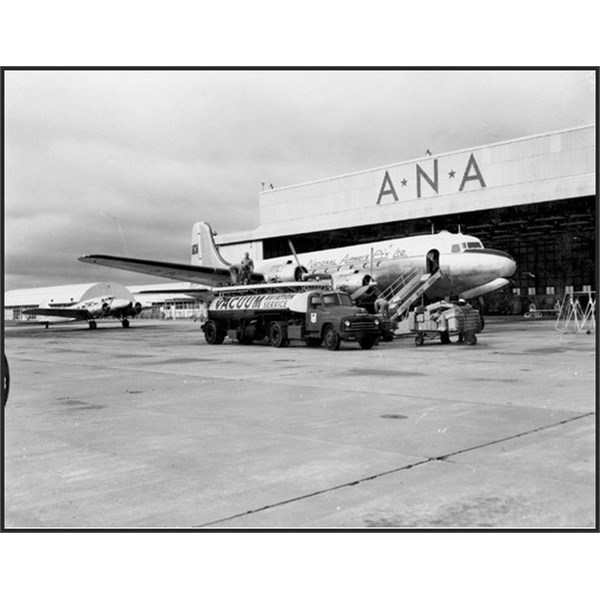
ANA Douglas DC-4 aircraft at Perth Airport in 1955.
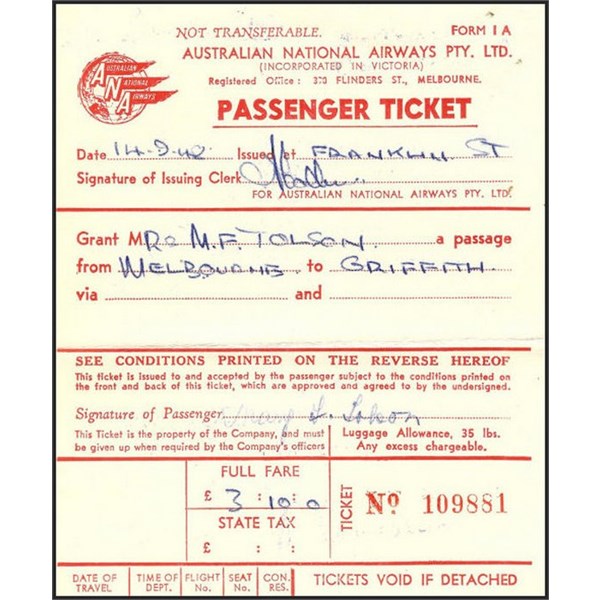
ANA Passenger Ticket
On 5 December 1921 the very first flight as an airline Ted Broad and Bob Fawcett in the Bristol Tourer G-AUDI crashed 130 km north of
Geraldton. Brearley suspended flight operations until 21 February 1922.
On 3 December 1926 Western Australian Airways Ltd. changed its name to West Australian Airways Ltd, though for the majority of its existence it was usually referred to as simply Airways. On 2 July 1928, Australia’s first interstate airmail contract, between
Perth and
Adelaide, was awarded to West Australian Airways, for 5 years.
Services began on 26 May 1929. The service used four new DH-66 Hercules aircraft with space for 16 passengers and a cruising speed of 95 knots. Passengers were given first-class treatment with a hot luncheon at
Ceduna, a sumptuous dinner at the overnight stop at the airline-owned hostel at
Forrest and excellent catering at Kalgoorlie.

Australian National Airways Freighter Service van, 1946
On 19 April 1934, the Federal Government awarded the 5-year
Perth -
Daly Waters route contract to MacRobertson Miller Aviation Co. This decision left West Australian Airways with only the now unsubsidised
Perth-
Adelaide route. In April 1936,
Adelaide Airways Ltd offered to purchase West Australian Airways and on 12 June the purchase was finalised for £25,000. On 1 July,
Adelaide Airways and West Australian Airways became part of the new Australian National Airways
The Holyman Airways period
On 19 March 1932 Flinders Island Airways began a regular aerial service using the Desoutter Mk.II VH-UEE Miss
Launceston between
Launceston, Tasmania and Flinders Island in Bass Strait, which competed with shipping
services offered by William Holyman and Sons Ltd. Due to monopoly arrangements with other Australian shipowners, Holymans (as it was known) was only allowed to carry passengers on internal Tasmanian routes, and resented the intrusion. Brothers Captain Victor Holyman and Ivan Holyman purchased a de Havilland D.H.83 Fox Moth VH-UQM Miss Currie which entered service on the same route on 1 October 1932, and soon amalgamated with Flinders Island Airways to form Tasmanian Aerial
Services Pty. Ltd. They later purchased a de Havilland D.H.84 Dragon VH-URD Miss
Launceston that began a regular service between
Melbourne, Flinders Island and
Launceston in September 1933.
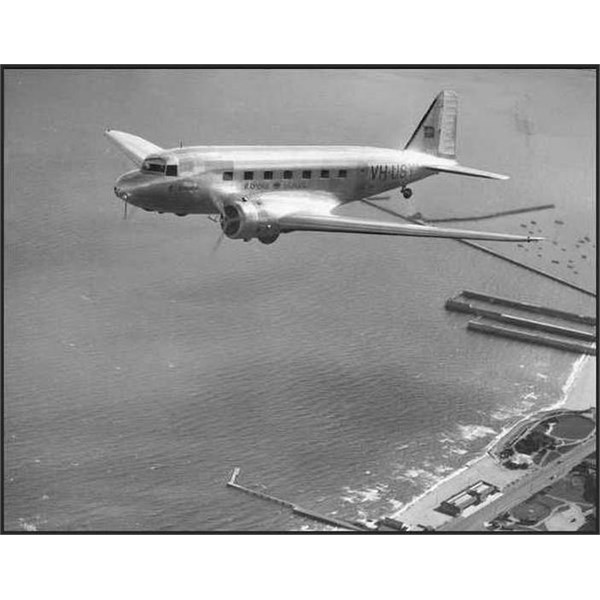
Douglas DC-2 VH-USY Bungana in 1936

In the 1950s the Australian National Airways passenger terminal at Cairns was located in this converted hangar
Following the Australian Government's announcement of the Empire Air Mail Scheme late in 1933, Holymans entered into a partnership with the two main shipping companies servicing Tasmania, Huddart Parker and the Union Steamship Company of New Zealand, to form an equal-share partnership in a new Holyman's Airways Pty. Ltd. headed by Ivan Holyman. The new company, with a capital of £90,000, was registered in July 1934, and ordered two de Havilland D.H.86 Express airliners. The first of these, VH-URN Miss
Hobart, began operating across Bass Strait on 28 September 1934, but went missing just three weeks later, on 18 October, and was believed to have crashed off Wilsons Promontory. Captain Victor Holyman's was one of the twelve lives lost.
Undaunted, Holyman's Airways purchased a second-hand D.H.84 (VH-URG Golden West) and ordered two more D.H.86s, and soon began to expand operations throughout south-eastern Australia. A route from
Melbourne to
Sydney via
Canberra was established in 1935 using D.H.86 VH-UUB Loila. On the day of a first proving flight between the capitals, 2 October, another D.H.86, VH-URT Loina, crashed into Bass Strait off Flinders Island killing all five on board. The
Melbourne-
Sydney flights, the first regular daily airmail service between the two centres, got underway on 7 October.
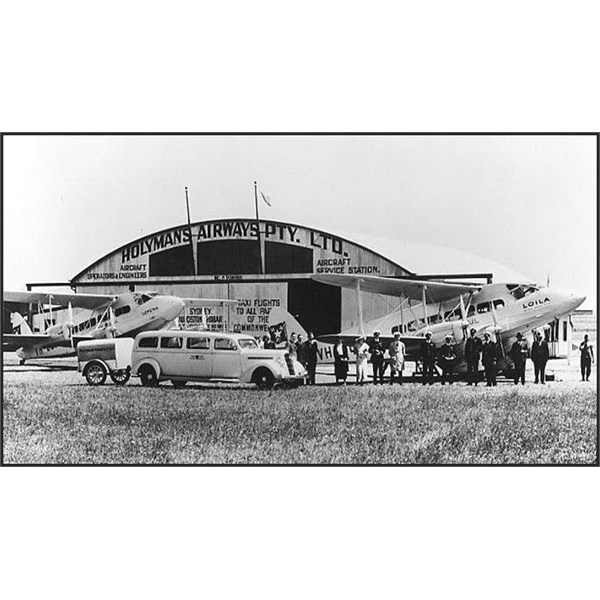
the Holymans hangar at Melbourne-Essendon,
After a non-fatal accident in Bass Strait to the D.H.86 VH-USW Lepena on 13 December 1935, Ivan Holyman used his influence with the Australian Government to have an official ban on the importation of US-built commercial aircraft to be lifted, and Holyman's Airways ordered an example of the recently introduced Douglas DC-2. It entered service as VH-USY Bungana on 18 May 1936.
Early in 1936 Ivan Holyman approached the
Adelaide Steamship Company, owners of
Adelaide Airways, with a view to an amalgamation aiming to become Australia's most powerful airline.
Adelaide Airways had recently taken over West Australian Airways and the new combine would thus effectively control airline traffic between
Perth,
Adelaide,
Melbourne and
Sydney. With funding from the Orient Steam Navigation Company a new Australian National Airways was registered on 13 May 1936, and began
services under its new name on 1 July 1936. It acquired a second DC-2 VH-UXJ Loongana that began a twice-weekly service between
Melbourne and
Perth on 21 December 1936.
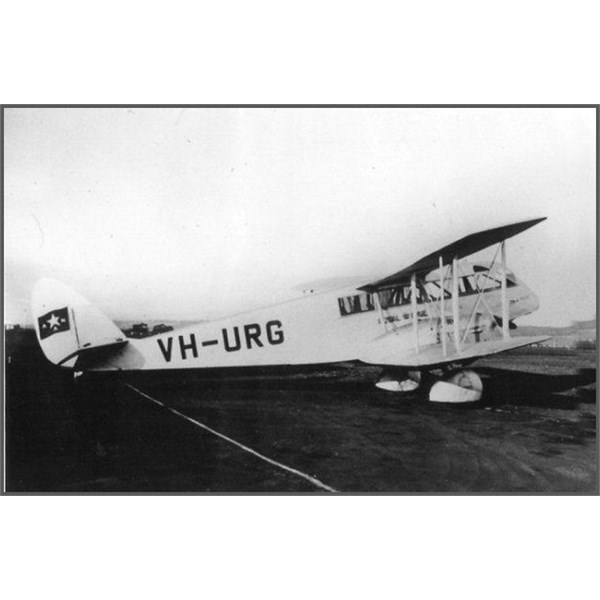
VH-URG named ''Golden West''. Sold to Holymans Airways in 1934, it received the name 'Yuptana'
Meanwhile efforts to expand operation northwards to Queensland were being thwarted by Airlines of Australia (AoA), its main competitor. Established in 1931 as
New England Airways by G.A. Robinson and Keith Virtue of Lismore, it operated
services in northern New South Wales and between
Sydney and
Brisbane, Queensland, expanding further into Queensland by taking over a number of struggling regional airlines during the mid-1930s. It was restructured as AoA in 1934 with funding by an investment group the British Pacific Trust. In 1936 it introduced Stinson Model A airliners in a regular service between
Sydney and
Brisbane, and later acquired Douglas DC-2s and Douglas DC-3s. After several months of fruitless negotiations with its financiers, ANA managed to gain a controlling interest in AoA in April 1937, although the two airlines retained separate public identities until 1942. Between them the two airlines operated four DC-2s and four DC-3s by the time of the outbreak of World War II, as
well as several other aircraft including two Model As, two D.H.84s, two D.H.86s and nine de Havilland D.H.89 Rapides.
When Australia entered World War II in 1939 the Government of Australia requisitioned ANA's four DC-3s, leaving it to battle on with its assortment of lesser aircraft. However, ANA was soon operating a network of
services around Australia on behalf of the war effort. It operated a large number of Douglas DC-2s, DC-3s and even at least one rare Douglas DC-5, mostly on the behalf of the American forces in Australia.
.